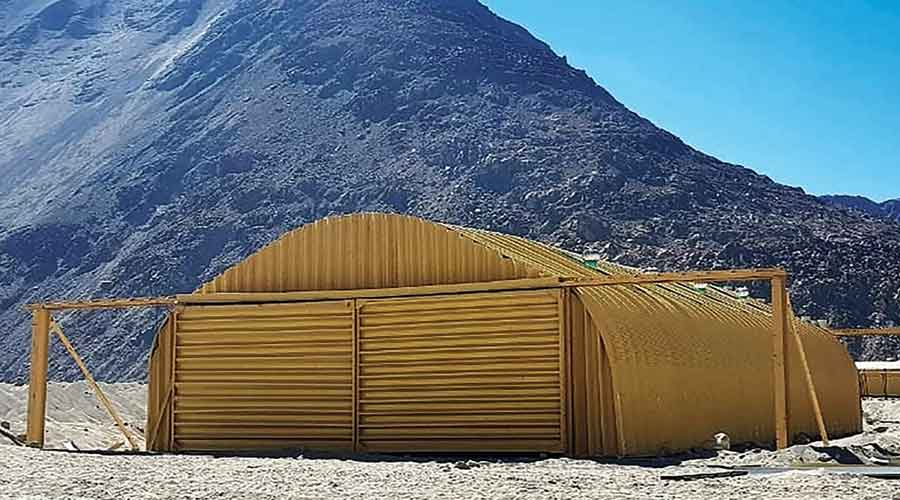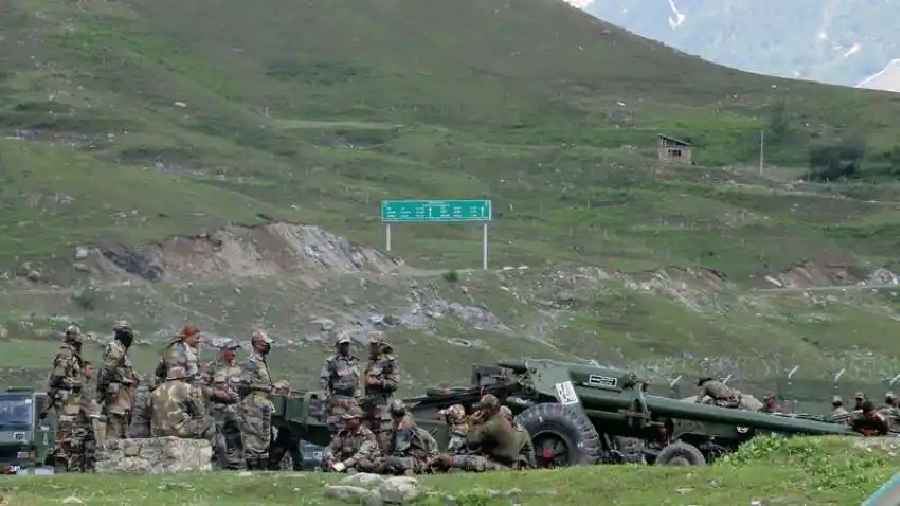Beijing’s latest move to rename places in Arunachal Pradesh is an attempt to establish a new status quo in the eastern sector, similar to Ladakh in the west where China has been occupying about 1,000sqkm of India-claimed territory since 2020, sources in the security establishment have said.
On Sunday, Beijing released new Chinese names for 11 places in Arunachal — five mountain peaks, two land areas, two residential areas and two rivers — taking the number of places it has renamed in the Indian state since 2017 to 32.
The external affairs ministry rejected the announcement by China — which lays claim to almost the whole of Arunachal — saying these places would always remain an integral part of India.
Sources in the defence ministry linked the renaming bid to the Chinese army’s repeated transgressions across the Line of Actual Control (LAC) in the eastern sector over the past few months, which led to a physical clash in December that injured 15 to 20 Indian soldiers.
“After having altered the undemarcated LAC in eastern Ladakh, the Chinese army has been showing brazen aggression over the past one year in the eastern sector in Arunachal and Sikkim,” a security official attached to the Union home ministry told TheTelegraph.
The official said: "The latest (renaming) bid is a clear indication that they are now working on a plan to establish a new status quo in the eastern sector too."
Of the 3,488km LAC, a stretch of 1,346km falls in the eastern sector, where China lays claim to 90,000sqkm of Indian territory.
A defence ministry official said: “They have been coming increasingly deeper into our territory in the eastern sector with the aim of staking claim to disputed areas.”
In December, the two countries’ armies clashed at 17,000 feet in Yangtze, 35km northeast of Tawang in western Arunachal, after more than 500 Chinese troops crossed the LAC and began vandalising Indian military posts.
The clash was the first since the June 15, 2020, confrontation in the Galwan Valley in eastern Ladakh that killed 20 Indian soldiers and at least four Chinese troops.
Defence minister Rajnath Singh had told Parliament that Chinese soldiers had tried to “transgress” the LAC and “unilaterally change the status quo” in Yangtze but were foiled by the Indian army.
A security official attached to the Indo-Tibetan Border Police said the Chinese army had been increasing its troop deployment along the LAC in the eastern sector over the past few months.
“The December transgression bid and the current renaming are a clear indication that the Chinese are planning to alter the status quo, as they have done in Ladakh,” he said.
In Ladakh, the Chinese plan to establish a new status quo has been evident from the silence of the joint statements, issued after military talks, on any Indian demand for the restoration of status quo ante.
While partial disengagements (pullbacks) have been carried out at five friction points — the Galwan Valley, the north and south banks of the Pangong Lake, Gogra and Hot Springs — they have come on Chinese terms.
Both armies have retreated by equal distances creating demilitarised “buffer zones” in between, leaving the Chinese still within India-claimed lines while India has been accused of “ceding more territory” to the Chinese.
The Chinese have, however, refused to disengage from the strategically crucial Depsang Plains. Said to be entrenched 18km inside India-claimed lines, they have built massive permanent infrastructure including roads, surface-to-air defence systems, radars, observation towers and military camps.
Military veterans and the Opposition have accused the Narendra Modi government of capitulating to Chinese aggression and bullying, citing India’s failure to insist on a return to pre-April 2020 positions and its acceptance of the buffer zones. The government claims the buffer zones are temporary.
Critics have also castigated Modi for saying, four days after the Galwan Valley clash, that no one had entered India or occupied Indian territory — a statement China had seized on to deny any intrusion and claim ownership of the entire territory it held.











